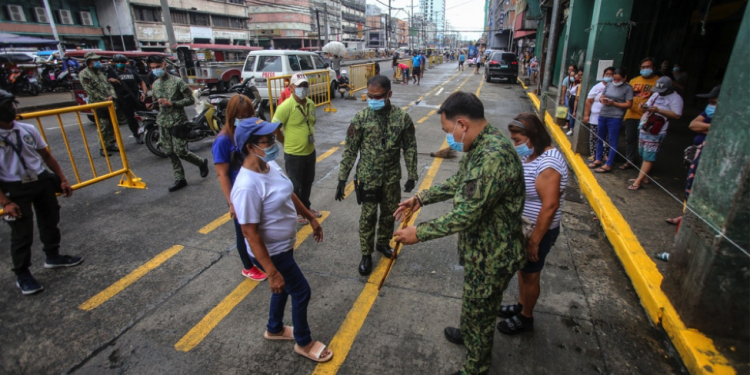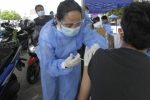Experts wants 5-week ECQ to lower NCR cases projection for next month-DOH

The imposition of the one-week general community quarantine with heightened restrictions (GCQ-HR), followed by a five-week enhanced community quarantine (ECQ) would not stop the increase of active cases in Metro Manila but it could decrease the original projection for September.
Health Undersecretary Maria Rosario Vergeire said Saturday even if Metro Manila implements “higher community quarantine classifications,” cases would still reach about 18,000 next month, and higher if it stayed under GCQ-HR for four weeks.
“Naipa-update natin itong projections. If we do GCQ-HR for one week and five weeks ECQ, puwede tayong magkaroon ng 15,000 active cases by the end of September (We were able to update the projections. If we do GCQ-HR for one week and five weeks ECQ, we could get 15,000 active cases by the end of September),” Vergeire said in a briefing.
Sharing other scenarios, Vergeire said Metro Manila would hit 42,000 active cases if it implements a mix of one-week GCQ-HR, three-week ECQ, and two-week modified ECQ; and about 58,000 if it loosens the classifications to a one-week GCQ-HR with two weeks of ECQ and three weeks of modified ECQ (MECQ).
“So looking at our projections, makikita natin na kahit tayo ay magsasagawa nitong paghihigpit ng ating mga community quarantine classifications, we will still see the rise in the number of cases pero ang pinaka-importante kung masasabayan natin ng pagpre-prepare ng ating sistema at magbabakuna ng mas madami ang hope natin ay walang masyadong magiging severe infections (We could see that even if we impose tougher classifications, we will still see a rise in the number of cases but the most important thing here is to prepare our system and vaccinate more people in the hope of having fewer severe infections),” she said.
Vergeire said the current spike in cases is likely driven by the more transmissible Delta variant in the Philippines.
While the DOH cannot yet officially declare a community transmission, she assured that the government is exerting all efforts to prepare the health care system by augmenting the number of beds and prepositioning additional oxygen and medical supplies.
The DOH has also asked local government units and health facilities to establish a “navigation system” that would refer mild and asymptomatic cases to “step-down care facilities” or quarantine sites to further decongest hospitals for other patients.
“Itong ginagawa natin ngayong paghihigpit ng mga classifications ang ating adhikain diyan is to delay further increase pero hindi niyan patitigilin, tutuloy pa rin ang pagtaas. Ang ating ginagawa ngayon is to prepare our system for this continuous increase in the number of cases (What we’re aiming with the implementation of stricter community quarantine classifications is to delay further the increase but it will not stop the spike. What we’re doing now is prepare our system),” she added.
Meanwhile, the Philippines Saturday reported 11,021 additional COVID-19 cases, the highest in nearly 4 months, and the second-straight day that new infections were more than 10,000.
The country’s total recorded COVID-19 infections stood at 1,649,341, of which 76,063 or 4.6 percent are considered the active caseload, based on the Department of Health’s (DOH) latest bulletin.
The positivity rate is at 19.1 percent, based on the samples received from 56,636 individuals who underwent testing for the virus on Thursday.
COVID-related deaths rose by 162, pushing the country’s death toll to 28,835.
This is the 3rd straight day that fatalities counted more than 100, data showed.
Recoveries, meanwhile, increased to 1,544,443 with 9,194 new recuperations.
Three laboratories failed to submit on time.
Vergeire earlier in the day said fresh cases in the country would continue to rise in the coming days, as the tougher lockdowns in Metro Manila and other areas are primarily aimed to slow the growth of infections and prepare the country’s health care system.






